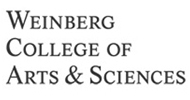Team:Northwestern/Project/Description
From 2011.igem.org
Helenmelon (Talk | contribs) |
Helenmelon (Talk | contribs) |
||
| Line 11: | Line 11: | ||
<br><br> | <br><br> | ||
| - | <DIV style="font-size:20px"> | + | <DIV style="font-size:20px">Biosensing System Design</DIV> |
| - | + | There are three vital components to our system: the autoinducer, the receptor protein, and the reporter construct. The autoinducer will be supplied by ''P. aeruginosa''. The receptor proteins need to be produced by the E. coli. Finally, the reporter sequence has to be regulated by the inducible promoters (autoinducer/R-protein specific). The three components are depicted below in Figure 1. | |
| - | + | ||
| - | + | ||
| - | + | ||
| - | + | ||
| - | + | ||
| - | There are three vital components to our | + | |
<div align="center"><html><table class="image"> | <div align="center"><html><table class="image"> | ||
| - | <caption align="bottom"></html>'''Figure 1:''' The three components of the sensing | + | <caption align="bottom"></html>'''Figure 1:''' The three components of the sensing system in ''E. coli''.<html></caption> |
<tr><td><img src="https://static.igem.org/mediawiki/2011/1/13/General_idea.jpg" style="opacity:1;filter:alpha(opacity=100);" width="700px" height="140px" alt="fig1"/ border="0"></td></tr> | <tr><td><img src="https://static.igem.org/mediawiki/2011/1/13/General_idea.jpg" style="opacity:1;filter:alpha(opacity=100);" width="700px" height="140px" alt="fig1"/ border="0"></td></tr> | ||
</table></html></div> | </table></html></div> | ||
Revision as of 22:47, 28 September 2011
PROJECT

RESULTS

CONSIDERATIONS

ABOUT US

NOTEBOOK

ATTRIBUTIONS


There are three vital components to our system: the autoinducer, the receptor protein, and the reporter construct. The autoinducer will be supplied by P. aeruginosa. The receptor proteins need to be produced by the E. coli. Finally, the reporter sequence has to be regulated by the inducible promoters (autoinducer/R-protein specific). The three components are depicted below in Figure 1.
 |
When combined, the three components of the system facilitate the detection of P. aeruginosa as depicted in Figure 2. The autoinducers directly influence the level of reporter expression; however, they are traditionally produced at basal levels by P. aeruginosa which would take a while to detect. Therefore, to enhance the sensitivity of the construct to the autoinducers, the R-protein synthase sequence is coupled with a constitutive promoter. Constitutive expression of the R-protein synthase will eventually saturate the cell, and enhance the detection of P. aeruginosa. The induced promoter and reporter sequence is designed upstream of the constitutive promoter and R-protein synthase construct.
 |
 "
"




